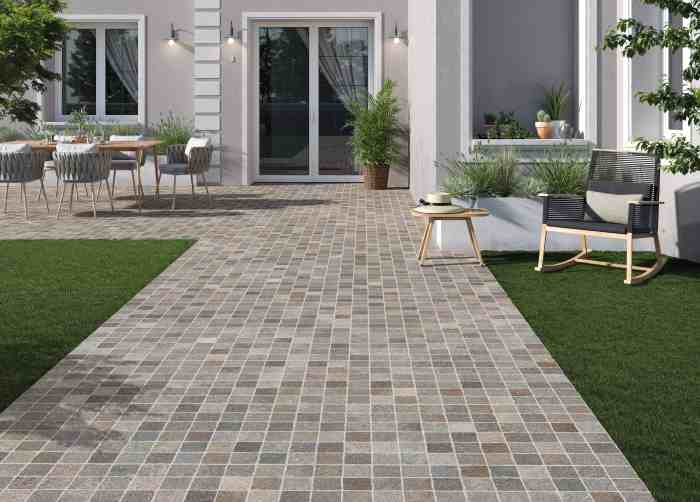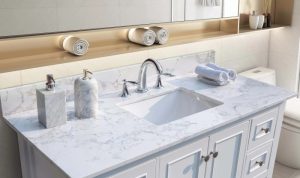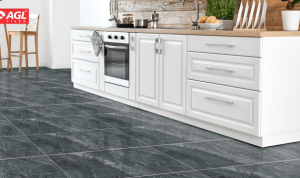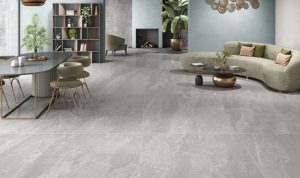Design Considerations for Outdoor Tile Flooring

Floor decor outdoor tile – Selecting the right outdoor tile flooring is crucial for both aesthetic appeal and longevity. The design choices you make significantly impact the overall look and feel of your outdoor space, demanding careful consideration of patterns, colors, textures, and the surrounding environment. Ignoring these factors can lead to a visually unappealing and functionally inadequate outcome.
Outdoor Tile Flooring Layouts
The arrangement of tiles profoundly affects the visual perception of your outdoor space. Strategic planning can create a sense of spaciousness, emphasize specific features, or simply enhance the overall design. Consider these distinct layout options to achieve your desired aesthetic.
- Herringbone Pattern: This classic pattern, characterized by its V-shaped arrangement of rectangular tiles, adds a touch of elegance and sophistication. Imagine a patio area paved with dark grey porcelain tiles laid in a herringbone pattern; the angular lines create visual interest and a sense of refined order. This pattern works well in larger spaces and can subtly enhance the perception of size.
- Running Bond Pattern: A straightforward yet effective choice, the running bond pattern involves laying tiles in parallel rows with offset joints. This creates a clean, contemporary look, ideal for minimalist designs. Visualize a terrace with light beige, textured tiles arranged in a running bond pattern; the simplicity allows the natural surroundings to take center stage. This is a versatile pattern suitable for various spaces and tile sizes.
- Basket Weave Pattern: This intricate pattern, using square tiles arranged in a criss-cross manner, lends a rustic charm to the outdoor space. Picture a pathway lined with terracotta tiles in a basket weave pattern; the warm color and organic texture evoke a sense of traditional craftsmanship and natural warmth. This pattern is particularly effective in smaller areas, adding visual texture without overwhelming the space.
Color and Texture for Mood Creation
The color and texture of your outdoor tiles directly influence the mood and ambiance of your outdoor area. Careful selection can transform a space, creating a relaxing oasis, a vibrant gathering spot, or a sleek modern retreat.
For a relaxing atmosphere, consider using cool, calming colors like pale blues, greens, or soft greys. Textured tiles, mimicking natural stone, can further enhance this feeling of tranquility. Imagine a poolside area paved with light blue, slightly textured tiles, creating a soothing and serene environment.
To achieve a vibrant ambiance, opt for bold, saturated colors like sunny yellows, fiery reds, or deep blues. Glossy or highly polished tiles can amplify the vibrancy. Picture a patio area with bright, multicolored mosaic tiles, creating a lively and energetic space, perfect for entertaining.
Okay, so like, you’re totally vibing with that rad new outdoor floor decor tile, right? But to make your patio extra fire, you gotta check out some killer outdoor sun wall decor – it’ll totally elevate the whole aesthetic. Then, boom, your floor tiles will look even more awesome against that backdrop. It’s a total game-changer, for sure.
A modern aesthetic is best achieved with clean lines and neutral colors such as grey, white, or black. Large-format tiles with a sleek, polished finish create a sophisticated and contemporary feel. Imagine a minimalist terrace with large, dark grey porcelain tiles, creating a clean, uncluttered, and modern atmosphere.
For a rustic feel, embrace earthy tones like terracotta, browns, and beige. Textured tiles that mimic natural materials like wood or stone contribute to the rustic charm. Picture a garden pathway with uneven, textured terracotta tiles, adding a sense of natural, homely warmth.
Environmental Considerations in Tile Selection, Floor decor outdoor tile
Ignoring the surrounding environment when selecting outdoor tiles is a recipe for disaster. Climate, landscaping, and local conditions must be factored in to ensure the tiles’ longevity and aesthetic integrity.
In areas with harsh winters, frost-resistant tiles are paramount. Porcelain tiles, for instance, exhibit excellent frost resistance, making them a suitable choice for colder climates. Ignoring this could lead to cracking and damage due to freeze-thaw cycles. In hot, sunny climates, light-colored tiles will reflect sunlight, reducing heat absorption and maintaining a more comfortable surface temperature. Conversely, dark tiles in cooler climates can absorb more heat, helping to keep the area warmer.
The surrounding landscaping also influences tile selection. For instance, tiles with a non-slip surface are essential around pools or in areas prone to moisture. The overall style of the landscaping should also be considered; rustic tiles would clash with a modern, minimalist garden design. A thorough assessment of the environment ensures a harmonious blend between the tiles and the surrounding space, resulting in a visually pleasing and functional outcome.
Installation and Maintenance of Outdoor Tiles: Floor Decor Outdoor Tile

Proper installation and consistent maintenance are crucial for maximizing the lifespan and aesthetic appeal of your outdoor tile flooring. Neglecting either will lead to premature deterioration and costly repairs. This section details the necessary steps for a successful installation and provides a comprehensive maintenance guide for various tile types.
Outdoor Tile Installation
The successful installation of outdoor tiles hinges on meticulous preparation and precise execution. Cutting corners will invariably result in problems down the line. The following steps Artikel a robust approach to ensure a durable and aesthetically pleasing result.
- Surface Preparation: Thoroughly clean the substrate, removing all debris, loose material, and existing coatings. Level any uneven surfaces using a self-leveling compound appropriate for exterior use. Ensure the base is completely dry before proceeding. For porous substrates, a primer may be necessary to enhance adhesion.
- Tile Laying: Apply a suitable exterior-grade thin-set mortar to the substrate, using a notched trowel to create consistent ridges. Carefully position each tile, ensuring even spacing between them using spacers. Firmly press each tile into the mortar to ensure complete contact. Regularly check for levelness using a level.
- Grouting: Once the mortar has cured (typically 24-48 hours), apply grout designed for exterior use. Use a rubber grout float to force the grout into the joints, removing excess grout immediately. Allow the grout to cure completely before cleaning.
- Sealing: Apply a high-quality sealant designed for outdoor tiles to protect them from moisture, stains, and weathering. Follow the manufacturer’s instructions carefully, applying multiple coats if necessary. This step is vital for longevity.
Outdoor Tile Maintenance
Regular cleaning and appropriate maintenance practices significantly extend the life of your outdoor tile. The specific approach will vary depending on the tile material.
- Ceramic and Porcelain Tiles: These are generally durable and easy to maintain. Regular sweeping or vacuuming removes loose debris. For cleaning, use a mild detergent and water solution, rinsing thoroughly. Avoid abrasive cleaners or harsh chemicals. Reseal every 1-2 years, depending on the level of exposure to the elements.
- Natural Stone Tiles (e.g., slate, travertine): Natural stone is more porous and requires more careful maintenance. Regular sweeping and gentle cleaning with a pH-neutral cleaner are essential. Avoid acidic cleaners, which can etch the stone. Sealing is crucial for protecting against stains and moisture damage. Resealing should be done annually or as needed.
- Concrete Tiles: Concrete tiles are robust but can be susceptible to staining. Regular sweeping and cleaning with a mild detergent are recommended. For stubborn stains, consider using a specialized concrete cleaner. Sealing helps protect against staining and moisture damage. Resealing frequency depends on the level of exposure.
Potential Installation and Maintenance Issues and Solutions
Problems can arise during both installation and maintenance. Proactive identification and resolution are key to preventing major issues.
- Uneven Surface: Improper surface preparation leading to an uneven surface can result in cracked tiles and grout failure. Solution: Ensure thorough leveling before tile installation.
- Improper Grouting: Incorrect grout application or using unsuitable grout can lead to cracking, staining, and water penetration. Solution: Use appropriate exterior grout and follow the manufacturer’s instructions meticulously.
- Efflorescence: A whitish powdery deposit on the tile surface, often caused by moisture and salts. Solution: Thoroughly clean the affected area with a suitable cleaner and prevent future moisture buildup.
- Staining: Stains can occur from various sources, including spills and environmental factors. Solution: Prompt cleaning is crucial. For stubborn stains, use a suitable stain remover specific to the tile type.
- Cracked or Chipped Tiles: This can be caused by improper installation, frost damage, or impact. Solution: Repair or replace damaged tiles as needed.
Expert Answers
What is the best sealant for outdoor tiles?
The best sealant depends on the tile type. Consult a tile specialist for recommendations based on your specific tile material.
How often should I clean my outdoor tiles?
Regular sweeping is recommended. More thorough cleaning with appropriate detergents should be done as needed, depending on weather and usage.
Can I install outdoor tiles myself?
While possible for some, professional installation is often recommended, especially for larger areas or complex designs, to ensure proper leveling and longevity.
Are all outdoor tiles frost-resistant?
No. Frost resistance is a crucial factor; choose tiles specifically rated for frost-prone climates to prevent cracking.





